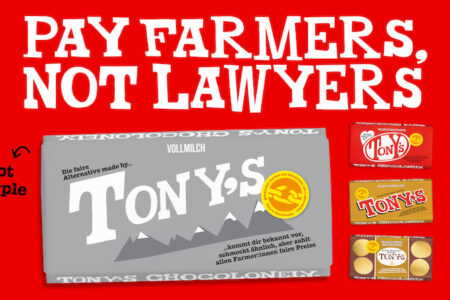BDSI reports annual German confectionery sector export growth, in spite of major supply chain issues

Pic: ISM in 2022, Cologne. Pic: ISM
Germany’s BDSI confectionery trade body has reported a 6.5% sales volume increase for the nation’s sector, backed by an increase in exports, despite ongoing major energy crisis and significant spikes in ingredients costs, reports Neill Barston.
The organisation stressed that more than 200 key businesses in the industry faced a ‘spiral of costs’ as a result of the ongoing war in Ukraine, as well as warning of ‘massive problems in international supply chains’ that had not been witnessed since the Second World War that had delivered a cumulative negative impact – threatening the existence of many operating within the segment.
This has been underpinned by huge hikes commodity-based ingredients prices – including sugar (up to +100%), cocoa rising by 23%, corn 19% and Wheat by 9%, which are all key elements across the confectionery and snacks trade.
In spite of this, confectionery production volumes increased 2.8% within Germany, but the BDSI warned that this only partially covered the additional cost burdens that have deeply affected the country’s sector – and directly influenced this year’s postponement of ISM (last year’s event pictured main image and below) and Interpack, which traditionally takes place at the end of January in Cologne, but is now being held as a one-off in April. However, the delay in itself has caused issues with the revised dates falling less than two weeks before Interpack in neighbouring Dusseldorf this May.
Economic development
The German domestic confectionery supply (production + imports – exports) developed in 2022, and was just under 2.7 million t (-1.8%) in terms of volume. Domestic sales stagnated at an estimated €9.0 billion (+0.2%). According to estimates by the BDSI, production increased overall in Germany manufactured sweets and snacks in 2022 to 4.0 million t (+2.8%). In terms of value, production also developed positively at around €14.0 billion (+6.5%). The estimates of the BDSI are based on the official statistics of the Federal Office, and the market data of the relevant market research institutes perish.

The export business with confectionery, which remains of core importance for the German confectionery industry and snack items was able to grow in the course of 2022 despite global Supply chain problems and imponderables in world trade, such as the consequences of the War in Ukraine, continue to recover. A total of 2.5 million tons of sweets and snacks exported were. This means opposite year-on-year growth of +4.0%. Export sales increased in 2022 +11.5% to around €10.3 billion.
Bastian Fassin, Chairman of the BDSI, highlighted the fact that companies in the country were now badly affected by influx of additional regulations, and called on the EU and German Federal government to provide additional assistance to smaller and medium-sized companies.
“As a medium-sized industry, we demand that the federal government and the European Union take on the major and existential challenges instead of getting lost in the bureaucratic small and small. We urgently need solutions for a competitive and stable energy supply, an opening to combat the ongoing labor shortage and a functioning infrastructure in the areas of transport and digitisation. Instead, companies are burdened with a flood of national and European laws, which are also mostly impractical and extremely bureaucratic. If we continue like this, there is a risk of a market shakeout at the expense of small and medium-sized companies.”

Spiralling costs
As the BDSI noted, for companies in the German confectionery industry, the enormous cost burden is increasingly becoming a location decision or even a question of existence. In particular, but not only the sharp rise in energy and raw material costs in 2022, but also location-related burdens, which are already above average in Germany in the long term, have an impact. These include labour costs, taxes, the duration of approval procedures, as well as ‘sluggish’ broadband expansion and bureaucratic burdens.
While the organisation noted that the country’s government had provided some relief measures, it said that these must take into account significant additional costs cope with purchased electricity and natural gas.
According to the BDSI, it also hailed the European single market as one of the most significant successes for European trade as whole over the past 30 years in terms of free movement of goods – including foreign trade within the confectionery sector.
However, it noted that Brexit had caused significant complications for the European markets – including reducing the size of its internal market by 67 million, to 446.8 million people, weakening trading potential. In addition, it said this had in turn led EU member states exploring alternative nutritional, labelling and recycling standards, as well as origin regulations – resulting in a uniform legal framework being destroyed by individual national regulations (see our separate story on the UK’s proposed, so-called ‘bonfire of EU regulations’ which market observers have stated are set to leave legal black holes in regulations, should adequate replacements not be instituted within a cut-down timescale this year.
The BDSI warned this could lead to ‘enormous burdens’ with companies in the worst case scenario having to produce packaging for each individual member state. In response to this, it has called for the prevention of the internal market from being further eroded, and expanded as a cornerstone of EU economic policy.
Export trade share
With a value share of more than 60%, exports contribute in particular to value creation in the company at. Around 70% of all confectionery exports go to the Member States of the European Union, but increased in 2022 Export to third countries, in particular to the USA, Great Britain, Australia, Canada, Israel and Turkey.
As the organisation noted, labour shortages require more than skilled labor regulations. The dramatic lack of workers and trainees is getting worse also in the German confectionery industry, which is characterised by medium-sized companies 200 companies and around 60,000 employees.
Consequently, as previously reported, around 84% of Companies in the German confectionery industry are reporting massive problems with the filling positions for simple activities in production, for which none training, but only induction in the company is required. More more than 50% of companies in the confectionery industry also have difficulties to find suitable trainees. The industry therefore welcomes the fact that the Federal government on new regulations for the immigration of workers want to bring the way. However, it said that the country’s confectionery industry not only needs skilled workers from abroad, but urgently in particular workers for simple production activities in order for the sector to thrive.
Consumer behaviour
In terms of consumer demand, Germans see a high personal responsibility for balance within their dietary intakes, with society as a whole (5%) and the state 3% being the other factors in health considerations.
According to the BDSI, overall societal trends include sustainability (as seen with sustainably focused chocolate ranges such as Cabosse below) and climate protection, to which the German confectionery industry is also making its contribution in terms of its actions. Sustainability efforts in the industry are not just limited to new recipes, but also include the use of certified raw materials and the manufacturing processes, as well as being key to the packaging sector. Many companies are testing more and more alternative packaging options or increase the proportion of recyclate in theirs secondary packaging.

The use of raw materials in confectionery that are certified according to sustainability standards and snack items has been used by the German confectionery industry for many years intensively promoted. This applies in particular to cocoa, the most important raw material, the chocolate. The certification is an important building block for the
Developing a more sustainable cocoa sector.
In 2021, the proportion reached to certified cocoa 79%. When the BDSI was first surveyed for 2011 this share is only about 3%. The confectionery industry is therefore considered to be making strong gains. This also applies to the palm oil and palm oil used in confectionery production. palm kernel oil – with a total of 94% of the palm oil used in the German confectionery industry is already certified today. The German confectionery industry is thus taking a a leading role.
Furthermore, the BDSI is intensively involved in the “Forum for Sustainable Cocoa” community initiative founded in 2012. In addition to members from the chocolate and confectionery industry as well as the food trade are getting involved. This has seen the likes of Fairtrade and the Rainforest Alliance as well as representatives of
civil society engage with the country’s key confectionery businesses. Also, the multi-stakeholder initiative “Forum Sustainable Palm Oil” is one of the committed members of the BDSI.
Results by segments
A total of 1.2 million tons of chocolate goods produced (+1.7%). The production value increased around +4.5% to around €6.2 billion. The export of chocolate goods developed positively in 2022, in terms of quantity (+5.8%) as well as in value (+13.2%).
Within Fine baked goods, manufacturers recorded slight growth in 2022. Regarding volume, the production of fine baked goods increased based on the estimates of the BDSI by +1.8%. A total of around 765,000 t of fine baked goods were processed and produced. In terms of value, production rose by +7.1% to around €2.4 billion. Also
exports of fine baked goods recorded an increase of in 2022 +4.8%. The export value increased by +12.8%.
As far as candies and confectionery, manufacturers also saw encouraging developments despite tough conditions. Quantitative production increased by an estimated 6.0% compared to the previous year, to 660,000 t, in value by +13.3% to approx. €1.8 billion. There was also export growth of 2022 for sweets and confectionery put at +11.7%, rising 20% in value. Finally, for snacks, items had recorded slight declines in the previous year. According to BDSI estimates, the production volume fell by -0.1% to around 365,000 t. In terms of value, production increased by +4.1% to around €1.7 billion. However, regarding exports, snack items developed positively in 2022 and increased
compared to the previous year by +4.2% in volume and +6.5% in value.



